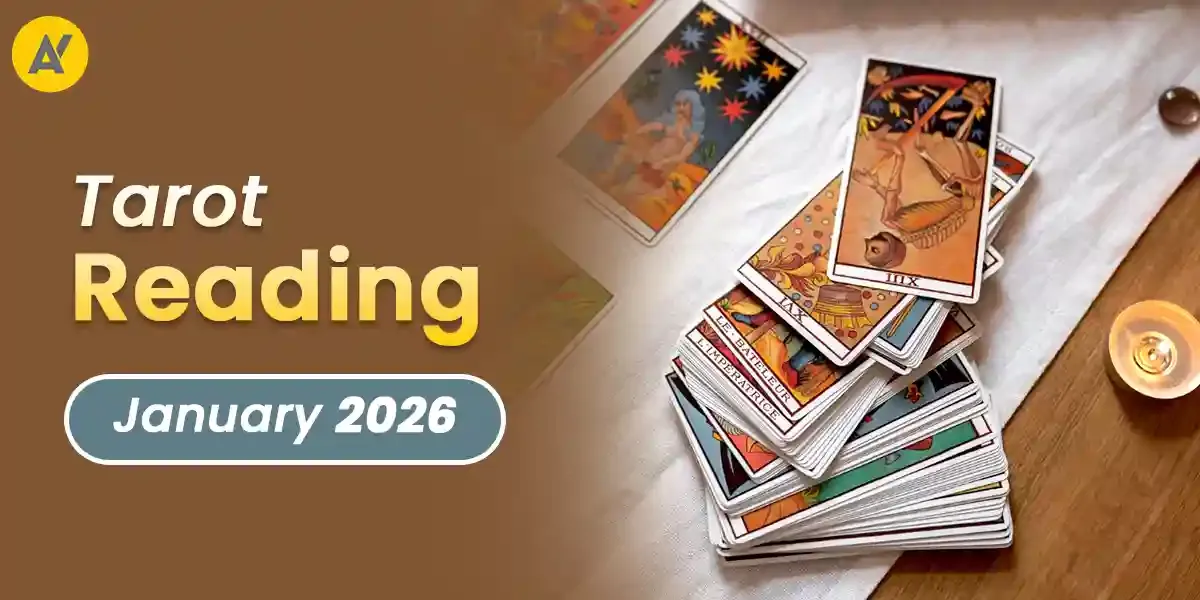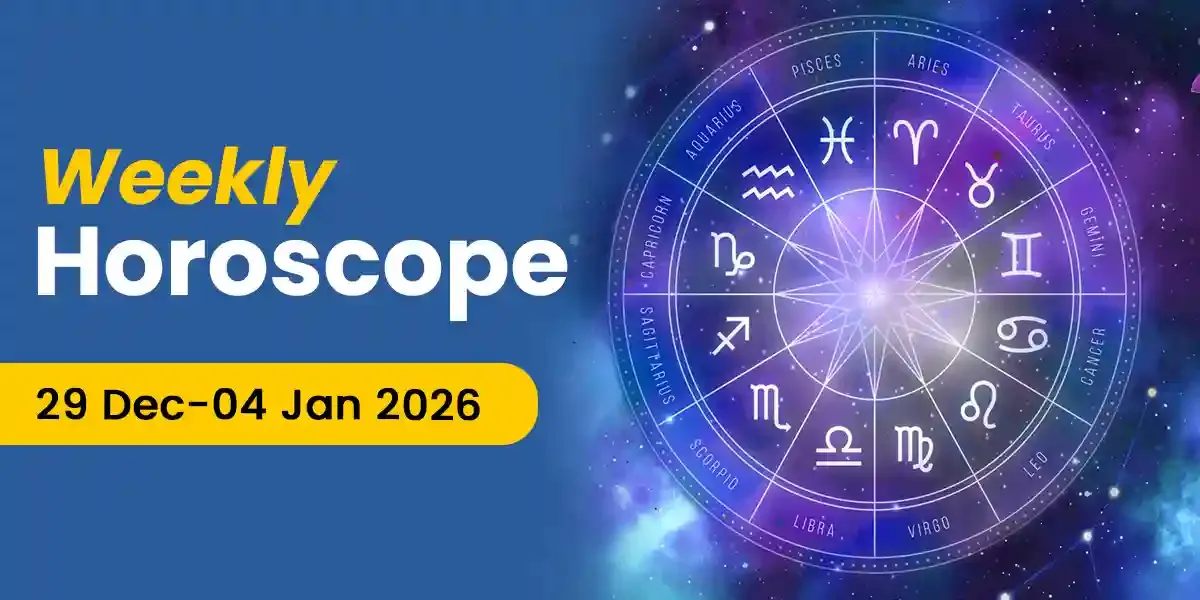
Since time immemorial, the celestial wonders that unfold in the night sky have captivated human imagination. A Lunar Eclipse, popularly known as Chandra Grahan, stands out as a captivating and awe-inspiring spectacle among all the celestial events. Not only does it offer a breathtaking visual display, but it also holds a deep significance in the realms of astrology and Hinduism.
This comprehensive article will delve into the intricacies of the Lunar Eclipses, exploring their scientific foundations and uncovering their profound relationship with Vedic astrology and Hinduism. We'll also particularly delve into the Lunar Eclipse date and time and the remedies to do during this second Chandra Grahan of 2023.
What Is The Lunar Eclipse Date And Time? Check Out Here!
The second Lunar eclipse of 2023 is soon to take place. Here are the Chandra Grahan 2023 October in India date and time and the Lunar Eclipse Sutak time for 2023. The timings below are based on the Partial Lunar Eclipse 2023 in Delhi.
- The Partial Lunar Eclipse will happen on 28th-29th October 2023 (Saturday - Sunday).
- Lunar Eclipse 2023 in India (Starts) - 01:06 AM, 29th October 2023
- Maximum of Lunar Eclipse 2023 - 01:44 AM
- Lunar Eclipse 2023 in India (Ends) - 02:22 AM
- The Duration of The Local Eclipse - 01 Hour 16 Minutes 16 Seconds
- Very First Contact with The Penumbra - 11:32 PM, 28th October 2023
- Very First Contact with The Umbra - 01:06 AM
- Last Ultimate Contact with The Penumbra - 03:55 AM
- Last Ultimate Contact with The Umbra - 02:22 AM
Given below is the Lunar Eclipse Sutak time in India.
- Lunar Eclipse Sutak Time (Starts)- 02:52 PM, 28th October 2023 (Saturday)
- Lunar Eclipse Sutak Time (Ends)- 02:22 AM, 29th October 2023 (Sunday)
The Mechanics of A Lunar Eclipse
To comprehend Lunar Eclipses' significance in scientific and cultural contexts, it is crucial first to understand the fundamental mechanics of this celestial phenomenon. A Lunar Eclipse occurs when the Earth physically comes directly between the mighty Sun and the Moon, casting a shadow that obscures the Moon's illumination. This special alignment creates a unique visual spectacle as the Earth's shadow gradually engulfs the Moon, resulting in a sequence of distinct eclipses, i.e., the Penumbral, Partial Eclipse, and Total Eclipse.
Find out more about the scientific facts of Lunar Eclipses at the end of this article.
Significance of Lunar Eclipse in Hinduism
The connection between Lunar Eclipses and Hinduism runs deep, with numerous mythological legends associated with this extraordinary celestial event. These tales involve deities, demons, and planets and help explain eclipses' origins in cosmology.
Some of the most prominent stories include.
- Churning of The Ocean (Samudra Manthan)
One of the most popular Hindu legends involving Lunar Eclipses is the tale of the churning of the ocean or the Puranic legend of the Samudra Manthan.
According to the Puranic legend, the divine Gods and the demons churned the cosmic ocean to acquire Amrita, the nectar of immortality. Many celestial objects, including the Moon, emerged from the ocean during this endeavor. It is popularly believed that the churning process symbolizes the heavenly forces at play during an Eclipse, where the key players, i.e., the Earth, Sun, and Moon, align themselves in a celestial dance.
- Rahu And Ketu
In Hinduism and Lunar Eclipse astrology, Rahu and Ketu are two shadowy celestial entities or planets linked with Lunar Eclipses. A myriad of divine treasures surfaced during the celestial event of the ocean churning. One of these treasures was a sacred pot (Kumbha) bearing the elixir or nectar of immortality. The deities, under the guidance of Lord Vishnu, eagerly sought this nectar to rejuvenate their powers and regain their strength.
Nonetheless, the Asuras, led by the demon Svarbhanu, harbored a longing for the nectar. In their quest for immortality, Svarbhanu cunningly disguised himself as a Deva and infiltrated the ranks of the divine Gods who were receiving the nectar. Svarbhanu strategically positioned himself between the Sun and the Moon in the nectar distribution line. However, as the nectar was being distributed, the Sun and the Moon soon detected Svarbhanu's ruse and promptly alerted Lord Vishnu and Lord Shiva.
Just as Rahu was on the verge of consuming the nectar, Lord Vishnu swiftly intervened, severing Rahu's head with his divine weapon, the Sudarshana Chakra (a formidable discus). However, since Rahu had managed to take a sip of the nectar, he attained immortality. Svarbhanu, the cunning demon, was cut into two parts and became two entities, i.e., Rahu, the demon's upper body, and Ketu, the lower body. As per Lord Vishnu's command, they were subsequently placed into the planetary system.
According to the Lunar Eclipse and Hindu beliefs, the Sun and Moon played a pivotal role in beheading the demon, making them Rahu's biggest enemies. Consequently, astrologically, the alignment of Rahu with the Sun and Moon in the horoscope is considered unfavorable. This tale also explains why Rahu occasionally swallows the Sun and Moon, resulting in the Eclipse of the Sun and Moon.
The Association of Lunar Eclipse And Indian Astrology
In Vedic astrology or Jyotisha or Jyotishya, Lunar Eclipses hold a special place. The Hindu Lunar calendar considers Lunar Eclipses for various religious and astrological activities.
Here's how Lunar Eclipses are perceived and incorporated in Hindu astrology.
- Inauspicious Period
Lunar Eclipses are generally considered inauspicious times in Hindu astrology. They are believed to be associated with negative energy, and the Sutak period begins 9 hours before the Lunar Eclipse and ends with the Lunar Eclipse. There are things that people should refrain from during the Sutak period.
Rules of the Lunar Eclipse Sutak period that you must keep in mind
- During the Lunar Eclipse Sutak time, cooking and eating are typically avoided, as this period is considered inauspicious. However, exceptions are made for the sick, elderly, or pregnant individuals.
- To counteract this inauspicious time, it's advised to place Basil leaves in pre-prepared food before the impure or Sutak period begins. Also, add a Basil leaf to milk and anything made from it, as well as into water. Basil leaves are believed to neutralize the effects of the impure environment.
- Pregnant women, especially during the Lunar Eclipse in 2023, should take extra precautions and take care of themselves. They are advised not to leave their homes from the start of the impure period until the Lunar Eclipse ends. Applying Turmeric to their stomachs is also recommended.
- Sharp objects like knives or scissors should be avoided from the start of the Sutak period until the end of the Eclipse. They should also abstain from stitching or sewing.
- It's also best to refrain from performing Puja or rituals in your home temple during this time. Instead, engaging in mental prayer or meditation is considered spiritually beneficial.
- Aside from abstaining from food and water, it's customary to avoid other activities such as sleeping, sexual relations, and significant undertakings during the Sutak period. The primary focus is maintaining a spiritually pure state of mind during the Lunar Eclipse
- Lunar Eclipse Rituals And Remedies
Although Lunar Eclipses are often considered inauspicious, they present occasions for conducting specific rituals and remedies to mitigate their negative effects. These practices may include reciting mantras, taking a bath, partaking in ceremonial purifications, and contributing to charitable causes during Eclipses.
- Spiritual Importance
In Hinduism, Eclipses are frequently regarded as windows for spiritual introspection and meditation. During such occurrences, devotees may choose to elevate their spiritual pursuits, intensify their spiritual practices, and seek blessings from the divine.
- Astrological Analysis
Hindu astrologers meticulously analyze the alignment of celestial entities during Eclipses and integrate this data into their forecasts and personalized horoscopes for individuals.
This might interest you: How to Navigate the Aggressive Energies of November 2023: Numerology Insights
Lunar Eclipse Remedies That You Must Do
- When it comes to finance and career, here's the Lunar Eclipse remedy you must know. To avoid the negative effects of Lunar Eclipses, one should chant the mantra 'Om Shreem Hreem Shreem Kamale Kamalalaye Praseed Praseed Om Shreem Hreem Shreem Mahalakshmaye Namah.' Chanting this mantra can open up new paths in one's career. Additionally, to appease Goddess Lakshmi, chanting the mantra 'Om Shreem Hreem Kleem Aing Om Swaha' is also beneficial. Chant this mantra while facing the Northeast direction.
- If someone is facing obstacles in their career or encountering difficulties, then such individuals, after an Eclipse, should prepare sweet rice (Meethe Chawal) and feed it to crows. By performing this Lunar Eclipse remedy, the adverse effects of Saturn (Shani), Rahu, and Ketu can be mitigated, opening up new avenues for the individual's progress.
- If an individual's birth chart has a Grahan Dosha (Eclipse affliction), then during a Lunar Eclipse (Chandra Grahan), you are advised to donate essential items like milk, rice, sweets, etc., to someone in need. This helps enhance the positive influence of the Moon and dispels mental dilemmas.
- On the day of the Lunar Eclipse 2023, in the morning, purchase a lock and keep it under the Moonlight at night. Let the lock remain under the Moonlight throughout the night. Then, pick up the lock in the morning and keep it in a temple. It is believed that by doing this, you can get rid of debts and achieve financial progress. If you are continuously facing financial problems and are not achieving success despite hard work, then by doing this remedy, obstacles in financial progress can be removed, and success can be achieved in stalled endeavors.
- According to Vedic astrology, in order to strengthen the position of the Moon in the birth chart during a Lunar Eclipse, you can place a Basil leaf (Tulsi) in your mouth and recite the Moon's Beej Mantra- "Om Som Somaya Namah" or the Mahamrityunjaya Mantra -
"Om Tryambakam Yajaamahe Sugandhim Pushtivardhanam.
Urvaarukamiva Bandhanaan-Mrityormuksheeya Maamritaat."
Chanting these Mantras during the Eclipse is considered highly beneficial. Doing so helps mitigate the negative effects of the Lunar Eclipse and enhances the Moon's strength in the birth chart.
Another auspicious mantra to chant during a Lunar Eclipse is-
"Tamomaya Mahabhima Somasuryavimardana।
Hematarapradanena Mama Shantiprado Bhava॥1॥
Vidhuntuda Namastubhyam Simhikanandanachyuta।
Danenanena Nagasya Raksha Mam Vedhajadbhayat॥2॥
*Note- The effectiveness of these remedies may vary for individuals based on their unique horoscopes. We recommend consulting with an Astroyogi astrologer like Acharya Ved for the most precise insights.
Getting to Know Lunar Eclipse
- Penumbral Lunar Phase
The Moon enters the Earth's Penumbral shadow, causing a subtle dimming of its illumination. This phase is often less dramatic and may go unnoticed by casual observers.
- Partial Lunar Eclipse
As the Moon progresses deeper into the Earth's shadow, it enters the Umbra, which is the darkest and central part of the shadow. During this time, a portion of the Moon's surface becomes obscured, leading to a noticeable reduction in brightness.
- Total Lunar Eclipse
The most captivating phase of a Lunar Eclipse is the Total Lunar Eclipse. The Total Lunar Eclipse occurs when the Moon is fully engulfed by the Earth's Umbra. The Moon can take on a range of hues, from copper red to dark brown, depending on the Earth's atmospheric conditions. This stunning visual transformation is a testament to the cosmos' play of light and shadow.
Scientific Significance of Lunar Eclipse
The spectacular Lunar Eclipses hold immense scientific importance as they provide opportunities for astronomers and researchers to gather valuable data about the Earth, the Moon, the Sun, and celestial mechanics.
Some scientific aspects include.
- Measurement of Earth's Atmosphere- Earth's atmosphere scatters the Sunlight during a Lunar Eclipse. This phenomenon can be analyzed to measure the composition and density of the Earth's atmosphere, aiding in studying our planet's environment.
- Lunar Geology- Observing the Moon during an Eclipse can offer insights into the temperature and composition of its surface. Differences in temperature between the Lunar surface and the shadowed regions can help researchers understand the Moon's geology.
- Stellar Visibility- The temporary dimming of the Moon's light during a Lunar Eclipse provides an excellent opportunity for astronomers to observe faint stars and celestial objects typically overshadowed by the Moon's brightness.
Interested in knowing what the Lunar Eclipse 2023 effects will be like on your life, or are you seeking personalized guidance and tips? Connect with Acharya Ved on Astroyogi for a consultation.
Acharya Ved is a well-experienced Vedic astrologer, numerologist, and Vastu Shastra expert. He brings a unique blend of traditional wisdom and modern understanding to address contemporary problems, from career obstacles to financial blockages. As a psychic and life coach, he guides his readers toward a positive transformation, filling their auras with optimism and helping them achieve their dreams. His insights have assisted people from all walks of life in achieving success and happiness.








































